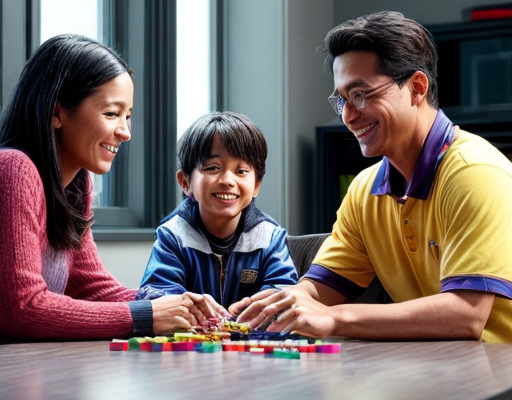
Effective Communication Strategies for Parents and Kids
“`html
Effective Communication Strategies for Parents and Kids
Introduction to Parent-Child Communication
Effective communication between parents and children is crucial in building a strong family foundation. It fosters mutual respect, understanding, and trust. In this comprehensive guide, we will explore various strategies that promote healthy communication within the family.
The Importance of Active Listening
Active listening is the cornerstone of effective communication. For parents, it involves listening with full attention, acknowledging children’s feelings, and responding appropriately. This practice assures children that their thoughts and feelings are valid and important, which promotes self-esteem and openness.
Expressing Empathy and Understanding
Empathy is the ability to understand and share the feelings of another. By expressing empathy, parents can connect with their kids on a deeper level. Conveying understanding of a child’s perspective reinforces the child’s sense of belonging and emotional security.
Practical Tips for Empathic Communication
Tips for empathic communication include using empathetic statements, avoiding judgment, and putting yourself in your child’s shoes. This helps children feel heard and valued, paving the way for open dialogue.
Encouraging Open Dialogue
To create an environment where kids feel comfortable expressing themselves, parents should encourage open dialogue. This means creating opportunities for conversation, expressing genuine interest in children’s lives, and setting aside time for family discussions.
Setting the Right Environment for Communication
A conducive environment for interaction is one that is free of distractions and interruptions. Establishing a routine of family meetings once a week, for instance, can give everyone a chance to speak and be heard in a calm setting.
Using “I” Statements for Conflict Resolution
In moments of conflict, using “I” statements helps express feelings without blaming or criticizing the other person. This technique fosters a non-confrontational approach and focuses on the speaker’s experiences and emotions, reducing defensiveness in kids.
The Role of Nonverbal Communication
Nonverbal cues often speak louder than words. Parents can be role models for positive body language. Maintaining eye contact, nodding to show understanding, and using warm gestures can enhance verbal communication and strengthen the parent-child bond.
Upholding Consistency in Communication
Children thrive on consistency. When parents are consistent in their communication style, it sets clear expectations for children and helps to create a stable environment where kids feel secure to express themselves.
Being Mindful of the Child’s Developmental Stage
Understanding children’s cognitive and emotional development is vital in tailoring communication strategies. Parents should adjust their language and approach to suit the child’s age and developmental level, ensuring that communication remains effective and age-appropriate.
The Power of Praise and Positive Reinforcement
Positive reinforcement helps in building children’s self-esteem. By praising efforts rather than just outcomes, parents can encourage a growth mindset. Acknowledging the good can also lead to positive behavior reinforcement, which is a highly motivating form of communication.
Practicing Patience and Tolerance
Patience is a virtue, especially when dealing with children. Displaying patience not only sets a good example but also gives children the time they need to articulate their thoughts and feelings. Tolerance for mistakes during communication teaches resilience and the value of perseverance.
Establishing Boundaries and Rules
Effective communication includes setting rules and boundaries. By clearly communicating the family’s values and expectations, parents can foster a sense of security and structure. Boundaries help children understand the consequences of their actions and instill discipline.
Navigating Technology and Communication
Technology can be both a tool and a barrier to family communication. Parents need to navigate the digital world carefully, encouraging responsible use of technology, and making sure it doesn’t replace valuable face-to-face interactions.
Creating Tech-Free Zones and Times
Implementing tech-free zones and times promotes quality family interaction. Regular unplugged periods encourage children to engage in conversations without the distraction of screens, fostering better communication habits.
Understanding and Navigating Emotional Conversations
Emotional conversations can be challenging. Parents should approach sensitive topics with care, using a tone of voice that is calm and reassuring. Guiding children through their emotions can teach valuable coping mechanisms and emotional regulation skills.
Engaging in Collaborative Problem-Solving
Including children in the problem-solving process helps develop their critical thinking skills. Collaborative discussions about challenges present an opportunity for parents to show trust in their children’s abilities and to reach solutions together.
Conclusion: The Lifelong Benefits of Strong Communication
Strong communication between parents and kids leads to lifelong benefits, including a lasting bond, mutual respect, and effective conflict resolution skills. By implementing the strategies covered, parents can lay the foundation for healthy, open, and honest dialogue with their children throughout all stages of life.
“`

